[Published at Slash Film] Edward Scissorhands is more than a gothic fairytale. It’s more than a suburban satire. It’s a complex film about systemic societal and economic change. Writer Caroline Thompson, director Tim Burton, costume designer Colleen Atwood, and production designer Bo Welch convey timely themes of classism, diversity, and suburban vapidity (post-war Suburbia through the Reagan Era suburban revival) through the use of snow, Edward’s (Johnny Depp) peculiar, unchanging outfit, the suburban setting, and a stealthily symbolic mansion. The story of Edward Scissorhands was conceived during Burton’s awkward suburban childhood upbringing in Burbank, California. It can be dated back to a single drawing in Burton’s teenage years of an early iteration of the Scissorhands character, which represented Burton’s feeling of isolation, his inability to maintain friendships, and communicate effectively with his peers.
In Burton’s biography by Helena Bassil-Morozow titled, Tim Burton: The Monster and the Crowd: A Post-Jungian Perspective, he explained, “I never really fell out with people, but I didn’t really retain friends. I get the feeling people just got this urge to want to leave me alone for some reason, I don’t know why exactly. It was as if I was exuding some sort of aura that said ‘Leave me the fuck alone.’” What began as an auteur-in-the-making’s lack of belonging in his own neighborhood grew into an intelligent allegory for suburban America and humankind’s manmade, pun intended, prejudice against anything that is considered different from the current norm.
This post contains spoilers for Edward Scissorhands.
Snowfall as a Symbol for Cultural Influence
At the end of Edward Scissorhands, when an aged Kim’s granddaughter asks how Kim (Winona Ryder) is certain Edward still walks the dilapidated floorboards high up in his gothic mansion, Kim explains, “Before he came down here, it never snowed. And afterwards, it did. I don’t think it would be snowing now if he weren’t still up there. Sometimes you can still catch me dancing in it.”
In portraying Edward as an outsider who brings the gift of snow to the neighborhood’s out-of-touch, pastel-laden, sunny suburban bubble with an apathetic undertone, Kim, Burton, and Thompson underscore the long-term influence of diversity inclusion. Edward could be seen as disabled. He has scissors instead of hands. It’s something he’s particularly self-conscious about. Many consider his appearance dangerous-looking for obvious, aforementioned reasons. However, that’s also what makes him temporarily appealing to the profoundly-bored residents searching for excitement.
Despite his scissors’, at first, almost universal appeal as a “refreshing” new mix into the residents’ daily, head-scratching routines, they ultimately become shunned as weapons instead of the hands and tools of a human being and brilliant artist. Still, whether or not these residents ever consciously think about Edward again after they drive him away, their lives are subconsciously changed, their ignorant perspectives on life ever-so broadened. Enlightened.
Although the neighborhood ultimately rejects Edward, exiling him back to his isolated, darkly-contrasted mansion, he continues to bring joy to the residents that turned on him; even though his garden sculptures and eccentric haircuts are no longer visual markers of the neighborhood, reflecting his short-term, positive change upon the long-stagnant residents, his legacy lives on. The snowfall is a consistent reminder of Edward’s unconscious, long-term impact on the changing social constructs of the community and the communities it represents.
The Mansion & The Neighborhood
Edward and The Inventor’s (Vincent Price) mansion is void of color, decrepit, perched on the crest of a towering hill, the visual and thematic antithesis of the colorful uniformity that represents Suburbia. Credit Bo Welch for creating one of the most memorable mansions in cinema history, and, arguably, the most original cinematic take on suburban monotony with the bizarre yet familiar neighborhood below it. Welch told the LA Times that the “old circus colors” painted on the subdivision in Florida, where they filmed Edward Scissorhands, represent the “faded optimism” of the middle-class neighborhoods the film aims to satirize.
The mansion is a dying structure symbolizing the end of the bohemian lifestyle, The Inventor’s death solidifying the downfall of individual autonomy and creativity with the onset of a new era of supply chain management and worker homogeneity. Without The Inventor as his North Star, Edward is unwittingly thrown into modern-day society after living this whole lifespan in an attic, looking down at it, through cracks among his decaying roof. The word “modern-day” implies a present-day setting. However, Edward Scissorhands is an amalgamation of two succinct time periods: The original suburban boom and its revitalization some 30 years later.
Ambiguity of Setting
One can see hints of 1950s post-war suburban American society through specific products, Avon (Peg is a salesperson, who were popularized in the 1950s-1960s), the uniform, single-storied, Levittown-esque housing developments, the neighbors’ matching old station-wagons, and Burton’s trademark bird’s eye shots of cars simultaneously pulling out of their driveways, representing the collective automation that suburban society has spawned.
However, one can also see the present day in Burton’s unique world through modern technology and attire such as Jim’s 1970s VW, his father’s high tech entertainment room and alarm system, Edward’s 1980s Virginia hat, the evolution of white-American gentrification in the form of strip malls and mass-consumption (emblematic of Reaganomics), the unsavory architectural aesthetics of an expanding 1980s suburban revival, and the cloyingly nosy nature of the residents of this neighborhood, masking their petty anxieties that emerge after decades of living in a suburban bubble. The the least-flattering effects of capitalism have initiated suburban decay. The residents convey a fleeting, unanimous obsession for the eccentric Edward, desperately trying to escape their own mundane lives.
Burton and Thompson utilize this complimentary juxtaposition of time periods. The parallel, opposing natures of Edward and that of the neighborhood (and the larger communities they represent) create a surreal suburban fantasy that highlights sociopolitical issues of classism and institutional segregation. Consider the members of the community the bourgeoisie, morally corrupted, living in excess without a care for anything outside of themselves and their own issues. Further, everything has become a competition in this capitalist wasteland; neighbors compete for who has the latest and greatest material possessions on the block.
Contrarily, Edward not only represents the innocent, childlike figure, unexposed to the neighborhood’s excesses and the negative consequences that accompany them, but, in some ways, the proletariat. Since he is essentially forgotten in society, he would be considered, in many ways, the lumpenproletariat, or the underclass.
Atwood’s Indelible Eye
Edward, with “weapons” for hands, shockingly pale skin, discordantly dark, unruly hair, isn’t the true monster in this Mary Shelley update. The residents of his once-welcoming neighborhood are. Four-time Oscar winner and frequent Burton collaborator Colleen Atwood takes Burton’s original childhood sketch and expounds upon its visual flourishes, crafting a steampunk-inspired costume for Edward that sticks out like a sore thumb among the vanilla residents. Not everyone in the neighborhood digs the look.
One resident, Esmeralda (O-Lan Jones), takes it so far as to refer to Edward as the spawn of the devil, slurring hateful profanities at anyone daring to associate with him. Similarly, for other, more primal, flawed-masculinity-related reasons, Jim (Anthony Michael Hall) despises Edward. Meanwhile, the residents have become so immersed in the material superfluity of the current Reagan boom, hiding away in their segregated suburban tract delusion, that they don’t even realize how overt their “subconscious” prejudice against Edward, the “other,” slowly grows to meet that of Esmeralda and Jim’s, eventually driving him out in extreme “pitches and torches”-esque fashion.
More Than a Suburban Satire
Beginning in the 1980s, the American suburbs became increasingly diverse, with more incoming residents representing the “other;” a larger population of minorities began to move to the highly uniform residential communities on the outskirts of their cities. True gentrification. Still, with suburban neighborhoods remaining predominantly white today, we have a long way to go as a society. Until we fully accept that no one neighborhood belongs to any specific kind of people, perhaps we can’t truly coexist. However, at least the suburban satire subgenre isn’t fading any time soon. Like Peg, it doesn’t hurt to attempt to spot a bright side among stunted progress, I suppose. Burton’s substantial critique of Suburbia and jab at capitalism speak to more complicated issues of income inequality, institutional segregation, and sparks deeper conversations about education, police, and big business reform. One just needs to ponder the implications of the prejudices and physical and societal hurdles that Edward faces when he attempts to assimilate.

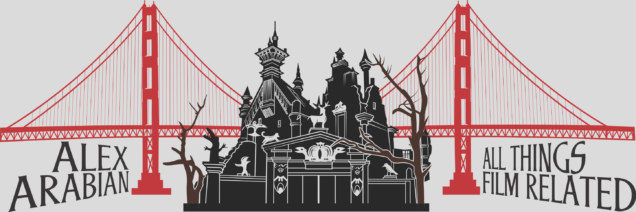
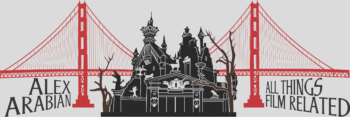

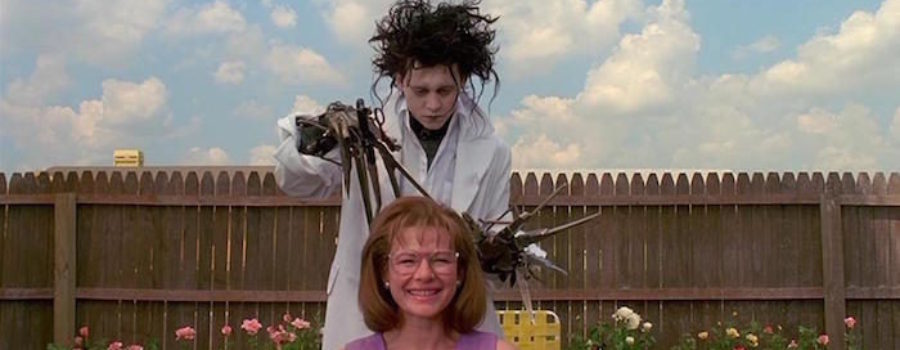
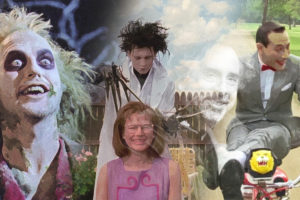
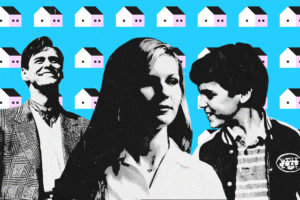
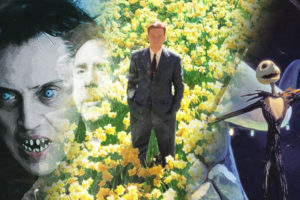
Leave a Reply
Your email is safe with us.